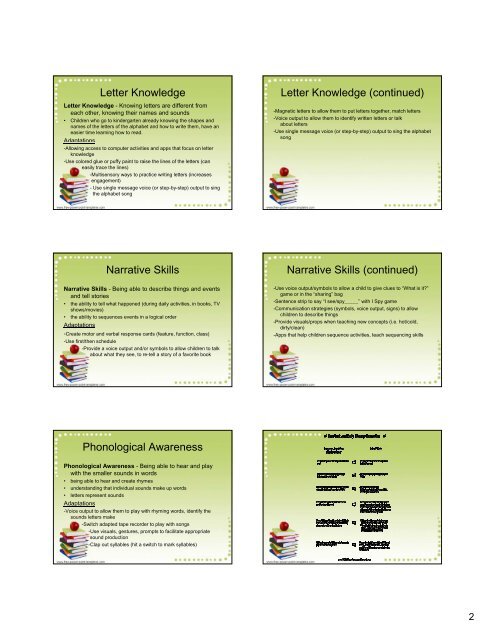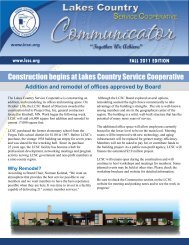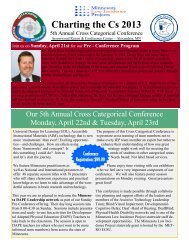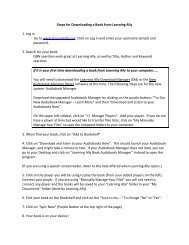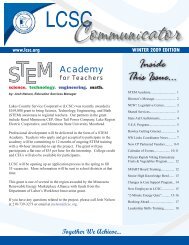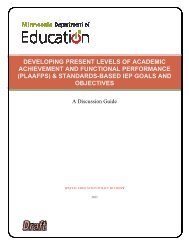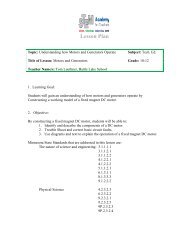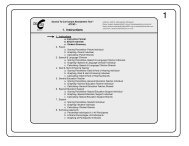PowerPoint Handout
PowerPoint Handout
PowerPoint Handout
Create successful ePaper yourself
Turn your PDF publications into a flip-book with our unique Google optimized e-Paper software.
Letter KnowledgeLetter Knowledge - Knowing letters are different fromeach other, knowing their names and sounds• Children who go to kindergarten already knowing the shapes andnames of the letters of the alphabet and how to write them, have aneasier time learning how to read.Adaptations-Allowing access to computer activities and apps that focus on letterknowledge-Use colored glue or puffy paint to raise the lines of the letters (caneasily trace the lines)-Multisensory ways to practice writing letters (increasesengagement)- Use single message voice (or step-by-step) output to singthe alphabet songLetter Knowledge (continued)-Magnetic letters to allow them to put letters together, match letters-Voice output to allow them to identify written letters or talkabout letters-Use single message voice (or step-by-step) output to sing the alphabetsongNarrative SkillsNarrative Skills (continued)Narrative Skills - Being able to describe things and eventsand tell stories• the ability to tell what happened (during daily activities, in books, TVshows/movies)• the ability to sequences events in a logical orderAdaptations-Create motor and verbal response cards (feature, function, class)-Use first/then schedule-Provide a voice output and/or symbols to allow children to talkabout what they see, to re-tell a story of a favorite book-Use voice output/symbols to allow a child to give clues to “What is it?”game or in the “sharing” bag-Sentence strip to say “I see/spy_____” with I Spy game-Communication strategies (symbols, voice output, signs) to allowchildren to describe things-Provide visuals/props when teaching new concepts (i.e. hot/cold,dirty/clean)-Apps that help children sequence activities, teach sequencing skillsPhonological AwarenessPhonological Awareness - Being able to hear and playwith the smaller sounds in words• being able to hear and create rhymes• understanding that individual sounds make up words• letters represent soundspAdaptations-Voice output to allow them to play with rhyming words, identify thesounds letters make-Switch adapted tape recorder to play with songs-Use visuals, gestures, prompts to facilitate appropriatesound production-Clap out syllables (hit a switch to mark syllables)2


